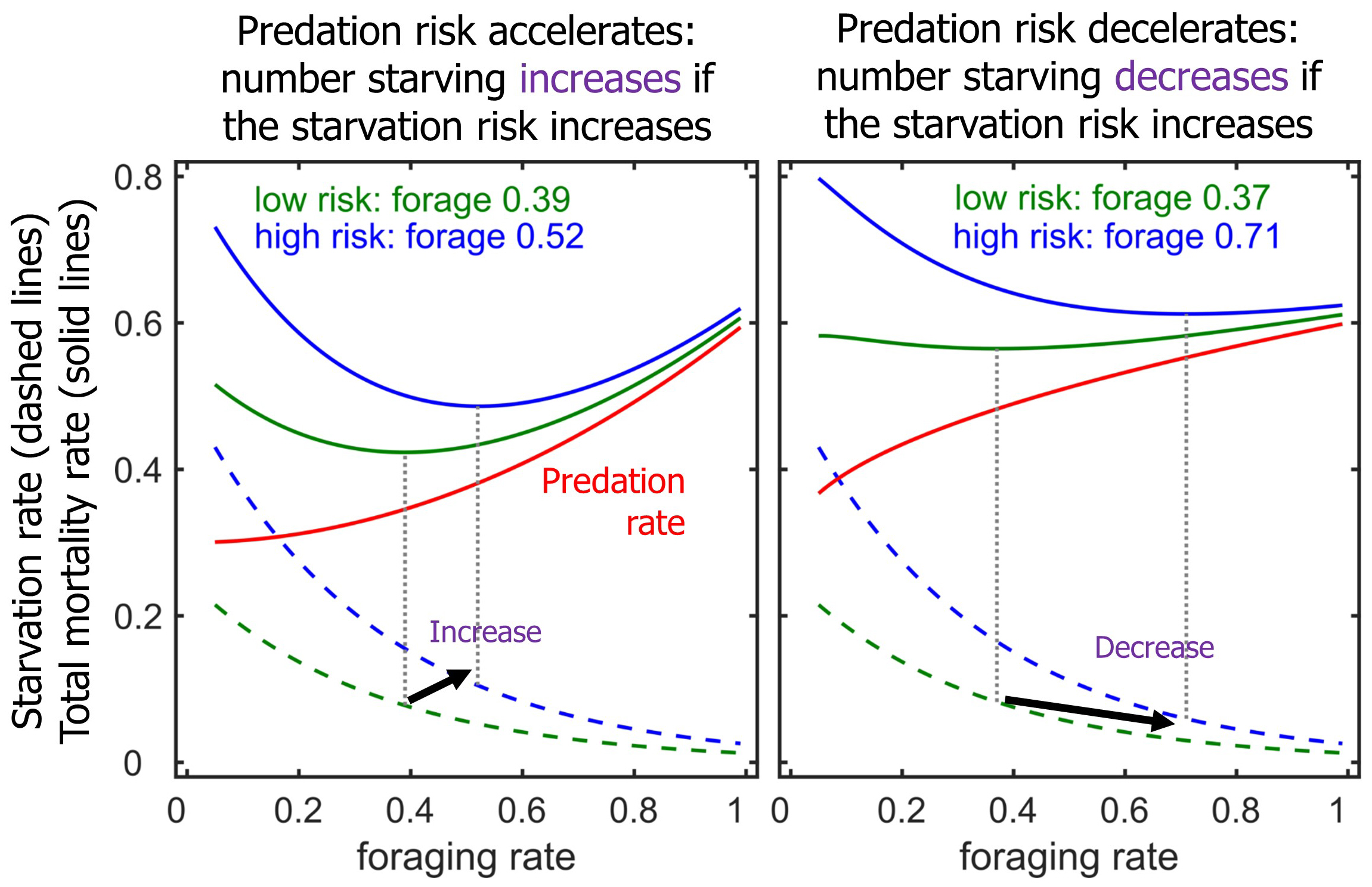Animals change their behaviour to manage the risks of starvation and predation, and so the number of animals starving can either increase or decrease when the starvation risk increases
Background
Ecologists have long been interested in what controls the size of populations. Two major influences are food and predation. Animals sometimes starve or get too underfed to breed, and animals get killed by their predators. There is often a trade off between these two factors, as places with more food have more predators, or animals can’t look out for predators whilst searching for food. This means that the behaviour of individuals in a population will affect the numbers of individuals that die from starvation or predation. This interaction must be taken into account when trying to understand how food shortage (starvation risk) or an increased number of predators (predation risk) will impact on populations.
Findings
This model assumes that predation rate increases as the foraging rate increases and the number of predators increases. It assumes that starvation rate decreases as the foraging rate increases and increases as starvation risk increases. This might happen if foraging rate determines the amount of fat stored, and starvation happens during a run of bad luck when foraging or due to an ability to forage (e.g. during very bad weather). The risk of starving will decrease initially quickly with fat reserves but level off when fat reserves get so high that they will always be enough to survive. The model predicts that the foraging rate should be up the point where the decrease in the starvation rate (negative slope) is equal to the increase in the predation rate (positive slope). This is independent of the two actual rates.
Implications
The model can be used to show the effect of a decrease in temperature or food availability which increase the starvation rate. The starvation rate does not necessarily increase. It depends on the curvature of how predation rate increases with foraging rate. If the predation rate increases the same for every bit of increase in foraging rate the starvation rate does not change as the risk increases. If the predation rate accelerates, such as might happen if food gets harder to find so the animal has to take more and more risk, then starvation rates does increase as risk increases, as might be expected. However, if the predation rate decelerates, such as might happen if animals learn where is safe to forage, then the number of individuals starving can decrease if the starvation risk increases. This means that to understand how mortality risk affects populations we have to understand their behaviour and how behaviour affects the mortality rates. It also means that the number of individuals being killed by predators or starving is not a good measure of the number of predators or the amount of food available.
Subject
Behavioural ecology
Subject Group
Zoology and Ecology
Keywords
starvation
predation
mortality
risk
populations


Posted by
AndrewDHigginson
on Fri Jul 03 2020
Article ID
P37XGXKKU
Details of original research article:
McNamara JM, Houston AI. Starvation and Predation as Factors Limiting Population Size. Ecology. 1987;68:1515-1519. View the Thread Network for this Finding
View the Thread Network for this Finding
Followed by:
Animals’ instincts to exploit gluts of food to avoid costing searching means we easily become obese in our ‘constant glut’ modern world
Posted by: AndrewDHigginson Posted Fri Oct 27 2017
Understanding how large and how fat different species are follows from predicting optimal bodies that avoid both starving and predation
Posted by: AndrewDHigginson Posted Wed Oct 11 2017
